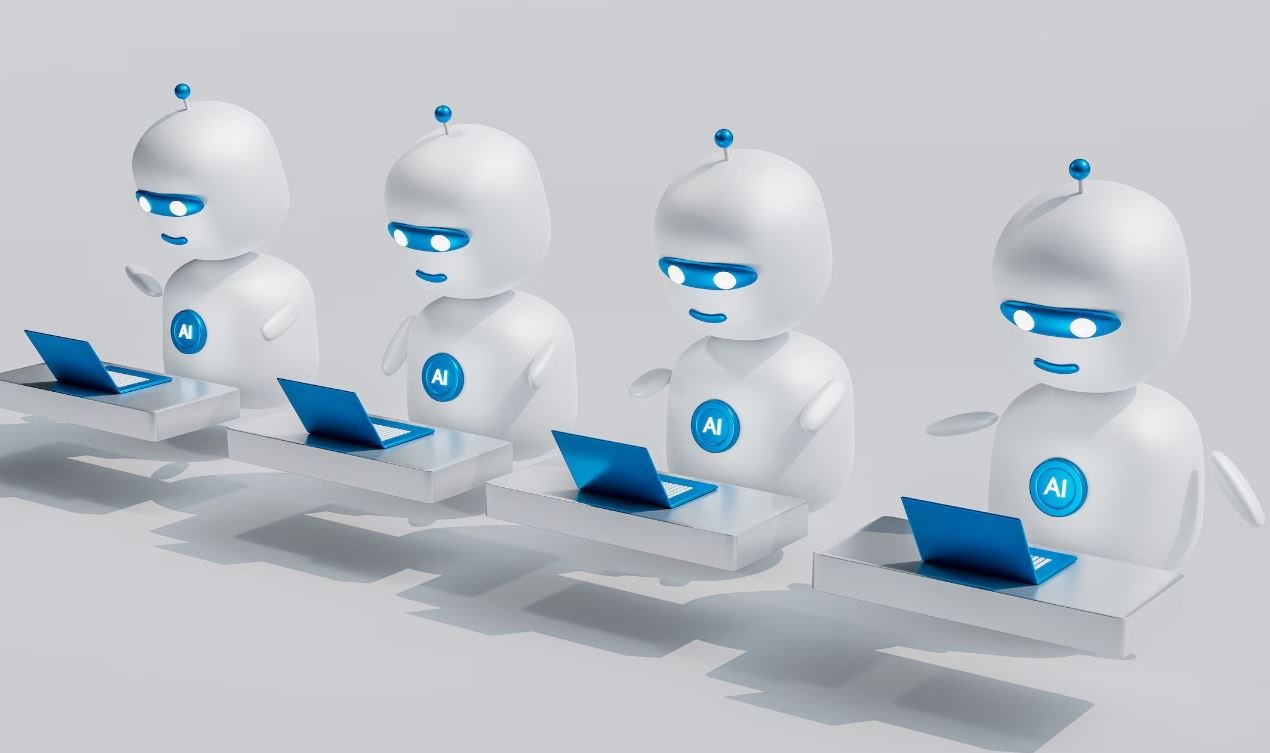AI Tools in Higher Education
Artificial Intelligence (AI) has made significant strides in various industries, and higher education is no exception. With the power to analyze vast amounts of data, generate personalized insights, and facilitate student engagement, AI tools are transforming the learning experience in colleges and universities. From intelligent tutoring systems to automated grading software, these tools are revolutionizing how education is delivered and assessed. In this article, we will explore the key benefits and challenges of using AI in higher education and discuss specific examples of AI tools that are making a difference in the sector.
Key Takeaways:
- AI tools enhance student engagement and learning outcomes.
- Automated grading software saves educators time and improves consistency.
- AI-powered virtual assistants provide personalized support to students.
- Implementing AI in higher education requires addressing ethical and privacy concerns.
Enhancing Student Engagement and Learning Outcomes
One of the main advantages of incorporating AI tools in higher education is their ability to enhance student engagement and improve learning outcomes. *Through adaptive learning algorithms, AI tools can personalize the learning experience for each student, catering to their unique needs and pace.* Intelligent tutoring systems, for example, can assess the learner’s strengths and weaknesses and tailor the course content accordingly. This individualization not only keeps students engaged but also helps them grasp difficult concepts more effectively. A study conducted at the University of British Columbia found that students using an intelligent tutoring system performed 16% better than those in traditional classrooms.
The Power of Automated Grading Software
Grading assignments and exams can be a time-consuming task for educators, especially in large classes. *Automated grading software powered by AI algorithms can save educators significant amounts of time and effort.* These programs use machine learning techniques to evaluate student submissions, providing feedback and grades instantly. By automating the grading process, educators can focus on providing valuable feedback and support to their students rather than spending hours on repetitive tasks. Furthermore, AI-powered grading systems assure consistency in evaluations, reducing grading biases and discrepancies. According to a study by Stanford University, automated grading of programming assignments achieved similar results to human grading in terms of accuracy and reliability.
Personalized Support from AI-powered Virtual Assistants
AI-powered virtual assistants are becoming increasingly prevalent in higher education as they offer personalized support and guidance to students. These virtual assistants, often embedded within learning management systems, can answer student queries, provide learning resources, and offer reminders about important deadlines and events. *Their ability to understand and respond to student inquiries in natural language makes interactions more engaging and convenient.* Virtual assistants can also generate data-driven insights about individual student performance, enabling early intervention strategies to be implemented. A study conducted at Georgia State University found that students who received personalized, AI-generated nudges were 10% more likely to pass their courses compared to those who did not.
| Benefits | Examples |
|---|---|
| Enhanced student engagement | Intelligent tutoring systems |
| Time-saving for educators | Automated grading software |
| Personalized support for students | AI-powered virtual assistants |
Addressing Ethical and Privacy Concerns
While the benefits of AI in higher education are evident, there are some ethical and privacy concerns that need to be addressed. *AI tools collect and process vast amounts of student data, raising concerns about privacy and data security.* Institutions must ensure that appropriate measures are in place to protect students’ sensitive information and comply with data protection regulations. Ethical considerations also come into play when using AI algorithms to make decisions about student performance or admission. Transparency and fairness in algorithmic decision-making are crucial to avoid biases and potential discrimination. To overcome these challenges, higher education institutions must develop robust policies and guidelines to govern the ethical use of AI in education.
| Statistic | Value |
|---|---|
| Percentage of colleges using AI-powered tutoring systems | 45% |
| Time saved by educators using automated grading systems | up to 50% |
| Percentage of students who feel AI tools improve their learning experience | 72% |
In conclusion, AI tools are revolutionizing higher education by enhancing student engagement, automating grading processes, and providing personalized support. These tools have the potential to transform how education is delivered and assessed in the digital age. However, it is crucial to address ethical and privacy concerns associated with AI implementation in order to ensure transparency and fairness. With the right policies and guidelines in place, AI can empower educators and students alike, unlocking new possibilities for improved learning outcomes and educational experiences.

Common Misconceptions
AI Tools Are Replacing Teachers
One of the most common misconceptions about AI tools in higher education is that they are replacing teachers. While it is true that AI tools are becoming increasingly integrated into educational systems, their purpose is not to replace human instructors. Instead, these tools are designed to enhance and support teaching and learning experiences. They can provide personalized feedback, assist with administrative tasks, and offer additional resources for students.
- AI tools enhance teaching and learning experiences
- AI tools provide personalized feedback
- AI tools assist with administrative tasks
AI Tools Are Bias-Free
Another misconception surrounding AI tools in higher education is that they are entirely unbiased. However, AI tools are created by humans and rely on data sets that can contain inherent biases. Without proper monitoring and thoughtful design, AI tools can perpetuate and even amplify existing biases. It is crucial for institutions to actively evaluate and address these biases to ensure fair and equitable outcomes.
- AI tools can contain inherent biases
- AI tools require monitoring and thoughtful design
- Institutions should address and mitigate biases
AI Tools Can Replace Human Judgment
Some people believe that AI tools possess the ability to replace human judgment entirely. However, while these tools can analyze vast amounts of data and provide valuable insights, they lack the contextual understanding and nuanced decision-making capability of humans. AI tools should be seen as tools to aid decision-making, rather than as complete substitutes for human expertise.
- AI tools lack contextual understanding
- AI tools cannot replace human expertise
- AI tools provide valuable insights for decision-making
AI Tools Are Just for STEM Fields
There is a common misconception that AI tools are only applicable in the fields of science, technology, engineering, and mathematics (STEM). While these fields may be the early adopters of AI tools, their potential extends far beyond STEM. AI tools can be utilized in various disciplines to analyze and interpret data, facilitate research, automate administrative tasks, and even assist in creative endeavors.
- AI tools have applications in various disciplines
- AI tools can facilitate research in non-STEM fields
- AI tools can automate administrative tasks in any field
AI Tools Are Cost-Prohibitive
Lastly, many people assume that AI tools are prohibitively expensive for educational institutions. While some advanced AI systems may come with a high price tag, there are also affordable AI tools available that can provide substantial benefits. Additionally, as the use of AI becomes more widespread, the cost of AI tools is likely to decrease, making them more accessible for a broader range of educational institutions.
- AI tools can provide substantial benefits
- Affordable AI tools are available
- Cost of AI tools is expected to decrease over time

AI Tools in Higher Education: The Benefits of Automation
As technology continues to advance, artificial intelligence (AI) tools are becoming increasingly prevalent in higher education. These tools are revolutionizing the way students learn, teachers instruct, and institutions operate. By automating various tasks and enhancing educational processes, AI is improving the overall efficiency and effectiveness of higher education systems. The following tables provide a glimpse into some of the significant impacts of AI in this sector.
Improved Student Engagement and Learning Outcomes with AI
AI-powered tools offer various features that enhance student engagement and drive positive learning outcomes. By analyzing a student’s performance and behavior, AI can adapt and personalize the learning experience, thus promoting better retention and outcomes. The table below illustrates some key benefits of AI in student engagement and learning:
| Benefit | Illustration |
|---|---|
| Personalized Learning Paths | AI algorithms adapt the curriculum to individual students, catering to their strengths and weaknesses. |
| Real-time Performance Feedback | AI tools provide instant feedback on assignments, quizzes, and exams, allowing students to track and improve their progress. |
| Intelligent Tutoring | Virtual tutors equipped with AI capabilities offer personalized guidance to students, answering questions and providing additional support. |
| Smart Content Recommendation | AI recommends supplementary resources and materials based on a student’s learning style, interests, and progress. |
Enhancing Administrative Efficiency with AI
AI tools are not limited to assisting students; they also present numerous benefits for administrative tasks and institutional management. By automating repetitive processes and streamlining operations, AI can provide valuable support to administrators and staff members. The table below highlights some advantages of AI in administrative efficiency:
| Advantage | Illustration |
|---|---|
| Automated Document Processing | AI tools can scan, organize, and process large volumes of documents, reducing manual effort and time required. |
| Smart Scheduling | AI algorithms optimize scheduling, taking into account variables such as classroom availability, instructor preferences, and student preferences. |
| Intelligent Admissions Systems | AI-powered systems can analyze application data, identify suitable candidates, and assist with the admissions process, improving efficiency and accuracy. |
| Data Analytics and Reporting | AI tools provide institutions with the ability to gain actionable insights, perform predictive analysis, and generate comprehensive reports for informed decision-making. |
AI-enabled Research and Collaboration
AI tools are reshaping how research is conducted and facilitating collaboration among academics. These technologies assist in data analysis, information retrieval, and fostering interdisciplinary approaches. The table below showcases some ways AI is transforming research and collaboration in higher education:
| Application | Illustration |
|---|---|
| Automated Literature Reviews | AI can sift through vast repositories of research papers to extract relevant information, significantly expediting traditional literature review processes. |
| Natural Language Processing | AI algorithms analyze text and facilitate automated summarization, translation, and sentiment analysis, aiding researchers in extracting valuable insights. |
| Collaborative Virtual Environments | AI-enabled platforms provide researchers with virtual spaces to collaborate, share ideas, and conduct experiments remotely, transcending geographical barriers. |
| Precision Medicine | AI algorithms assist in analyzing genomic data, accelerating the advancement of personalized medicine and targeted therapies. |
AI in Campus Safety and Security
AI-based technologies are also enhancing safety measures on college and university campuses. By incorporating advanced surveillance systems, predictive analytics, and cybersecurity solutions, educational institutions are better equipped to prevent potential risks and ensure the well-being of students and staff. The table below presents some ways AI is contributing to campus safety:
| Application | Illustration |
|---|---|
| Video Analytics and Facial Recognition | AI-powered cameras identify suspicious activities, recognize faces, and alert authorities in case of potential threats or unauthorized individuals. |
| Intelligent Emergency Response Systems | AI-enabled systems provide a rapid emergency response with real-time information dissemination, ensuring effective crisis management. |
| Cybersecurity Monitoring | AI tools continuously monitor network activities, detect anomalies, and proactively address potential cybersecurity threats, safeguarding sensitive data. |
| Predictive Analytics for Crime Prevention | By analyzing historical data, AI algorithms can identify patterns and predict potential criminal activity, enabling proactive preventive measures. |
The Future of AI in Higher Education
The integration of AI tools in higher education holds immense potential to revolutionize the learning experience, administrative processes, collaboration, and campus safety. As institutions continue to explore and adopt AI technologies, it is crucial to ensure responsible development and utilization of these tools. By leveraging the power of AI, educational institutions have the opportunity to create more personalized, efficient, and inclusive environments for both students and faculty.
AI Tools in Higher Education – Frequently Asked Questions
Question: How can AI tools benefit higher education institutions?
Answer: AI tools offer numerous benefits for higher education institutions. They can help enhance student learning experiences, automate administrative tasks, personalize education, identify at-risk students, improve student success rates, and facilitate research and data analysis.
Question: What specific tasks can AI tools automate in higher education?
Answer: AI tools can automate tasks such as grading assignments, providing feedback to students, managing course registration and scheduling, responding to frequently asked questions, and analyzing large datasets for research purposes.
Question: How do AI tools personalize education for students?
Answer: AI tools can analyze vast amounts of student data to identify individual learning needs and preferences. They can then deliver personalized content, recommend study materials, and provide adaptive learning experiences tailored to each student’s unique requirements.
Question: Can AI tools replace human instructors in higher education?
Answer: AI tools are not meant to replace human instructors. Instead, they serve as valuable aids in the educational process by automating certain tasks, providing additional support to instructors, and improving efficiency and effectiveness in various aspects of teaching and learning.
Question: How can AI tools help identify at-risk students?
Answer: AI tools can analyze student data such as attendance, grades, and engagement patterns to identify at-risk students who may require additional support. This early intervention can help prevent dropouts and improve student success rates.
Question: Are AI tools secure and reliable in handling sensitive student data?
Answer: AI tools should be implemented with robust security measures to ensure the privacy and confidentiality of student data. Higher education institutions should thoroughly evaluate the security features of AI tools and follow best practices to protect sensitive information.
Question: Are there any ethical concerns related to the use of AI tools in higher education?
Answer: Yes, there are ethical concerns associated with the use of AI tools in higher education. These include issues around data privacy, biases encoded in AI algorithms, transparency in decision-making, and the potential impact on human relationships and social interactions within educational settings.
Question: Can AI tools improve the accessibility of higher education?
Answer: Yes, AI tools have the potential to improve the accessibility of higher education for individuals with disabilities. They can provide adaptive learning experiences, assistive technologies, and alternative formats for content delivery, making education more inclusive and accessible to a wider range of learners.
Question: How can AI tools support research and data analysis in higher education?
Answer: AI tools can automate data collection, assist in data analysis, and generate insights from research data. They can help researchers process large datasets, discover patterns, and make evidence-based conclusions, thereby accelerating the research process and enhancing the quality of research outcomes.
Question: What are some examples of AI tools used in higher education?
Answer: Examples of AI tools used in higher education include virtual tutors, intelligent learning management systems, plagiarism detection software, automated essay grading systems, personalized recommendation engines, and chatbots for student support.





